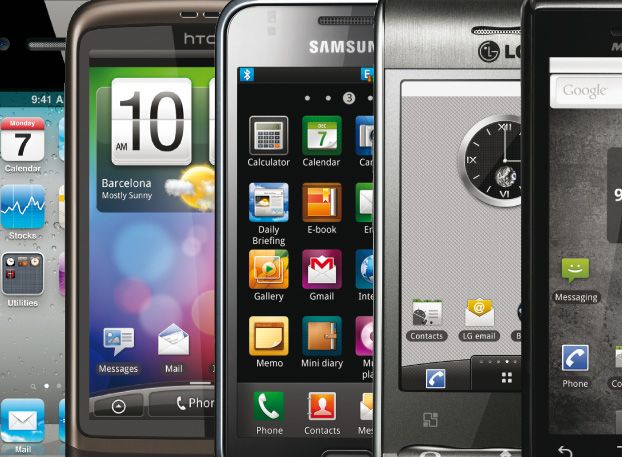Android, iOS Enjoy Total Domination Of Mobile Ecosystem

Android and iOS now enjoy total domination of the mobile ecosystem, as Symbian languishes at just 6.8 percent
New figures from IDC have highlighted the total domination of the smartphone sector by Apple and Android.
Despite the fact that there are ostensibly six major mobile platform options to chose from, most users lean toward either Apple or Samsung.
Mobile Domination
Or, more broadly speaking, people either chose Apple’s iOS or Google’s Android OS.
Combined, the two operating systems accounted for more than eight out of 10 of the smartphones that shipped during the first quarter, or 82 percent, research firm IDC reported 24 May. Of the 90 million Android smartphones that shipped, 45.4 percent were from Samsung.
 This most recent quarter’s 82 percent, compared with 54.4 percent a year ago, is the result of a combination of features that competitors are simply unable to match, said Ramon Llamas, IDC’s senior research analyst, in a statement.
This most recent quarter’s 82 percent, compared with 54.4 percent a year ago, is the result of a combination of features that competitors are simply unable to match, said Ramon Llamas, IDC’s senior research analyst, in a statement.
“Neither Android nor iOS were the first to market with some of these features, but the way they made the smartphone experience intuitive and seamless has quickly earned a massive following,” added Llamas.
Android’s total market share for the quarter was 59 percent, compared with 36.1 percent a year ago, while iOS claimed a 23 percent share, up from 18.3 percent, as Apple boosted shipments from 18.6 million units to 35.1 million.
Symbian, despite losing Nokia’s focus to Windows Phone, came in third, with a 6.8 percent share. (With Nokia rebuilding its brand around Windows Phone, Android-running Samsung smartphones likewise enabled Samsung to end Nokia’s 14-year reign as the world’s top-selling phone maker.)
Research In Motion’s BlackBerry OS followed in fourth place, with its share falling to 6.4 percent from 13.8, as consumers had little of interest to keep sales moving forward. RIM plans to launch new handsets running BlackBerry 10 – which it showed encouraging glimpses of at its BlackBerry World 2012 event 1 May – but not until later this year.
Compounding this issue, said the IDC report, “many companies now permit users to bring their own smartphones, allowing competitors’ operating systems to take away from BlackBerry’s market share.”
Linux Tops Windows Phone
Linux was up next, with a 3.5 percent share, up from 3.2.
“Samsung accounted for 81.6 percent of all Linux-powered smartphones, a 3.6 percent share gain versus the prior-year period,” said IDC. “Other vendors, meanwhile, have been experimenting with Android to drive volume. Still, Linux’s fortunes are closely tied to Samsung’s strategy, which already encompasses Android, Windows Phone and, later this year, Tizen.”
Microsoft’s Windows Phone, meanwhile – the ball finally nudged forward, if not actually slowly rolling – increased its market share from 2.6 percent to 3.3 percent. Although, IDC added, “Until Nokia speeds the cadence of its smartphone releases, or more vendors launch their own Windows Phone-powered smartphones, IDC anticipates slow growth for the operating system.
Nokia is expected to release a few more devices in time for the holiday season, which, in combination with Windows Phone’s growing app store, perhaps will help to better balance out the ecosystem.
For this to happen, OS creators and hardware partners “need to secure developer loyalty,” said Kevin Restivo, IDC senior research analyst. Developer enthusiasm, he added, “is typically a leading indicator of hardware sales or success.”
How much do you know about smartphones? Take our quiz.